These top models from Apple, Fitbit, Google, and Samsung offer great performance and a variety of useful features

Smartwatches that do well in Consumer Reports' testing, shown from left to right: Fossil, Samsung, Google, and Apple.
By Allen St. John
Smartwatches can do plenty of things, from answering texts to playing fun little puzzle games. But increasingly, smartwatches are becoming the home for health-related apps and functions that can help you and your doctor keep tabs on your well-being.
That’s why CR’s ratings take into account a watch’s health-related capabilities. These range from overall wellness metrics like sleep tracking and stress monitoring to cardiac metrics. For some watches, these can include both basic measurements like heart rate monitoring, and also electrocardiogram (ECG) readings and performance indicators like heart rate variability. Any health-related data you get from your watch can be used to begin a discussion with your doctor.
We also test watches on factors such as step count accuracy, ease of use, versatility, waterproofness of the case, and durability of the display.
Consumer Reports is a nonprofit membership organization. All products in our ratings devices are purchased at full retail.
Apple Watch Ultra
What it is: The titanium-cased Ultra is Apple’s top-of-the-line smartwatch, designed for use by athletes, outdoor adventurers, and those who fancy themselves as such.
What’s to like: The Ultra is the most radical rethinking of the Apple Watch since its introduction. The chunky titanium case is both larger and thicker, and the display is protected by a beefy metal bezel. The model has a variety of interesting new features, from an improved mic array for better calling under adverse conditions to a loud siren that can send an SOS signal. The Ultra even has an app that lets it function as a dive computer for scuba enthusiasts.
The watch uses the same processor as the Series 8 and the SE, and the interface looks and feels very similar to that of other Apple Watches. The Ultra performs very well in our labs, earning top grades in ease of use, scratch resistance, water resistance, and readability in low light, though its step-count accuracy is only average. It also earns a top score for its health features.
What’s not to like: The Ultra has the longest battery life of any Apple Watch—a reported 36 hours. The Ultra’s battery life extended with a new low-battery mode that turns off some power-sapping features, but the model is still likely to need more frequent recharging than, say, a cheap fitness tracker.
Bottom line: The Ultra has a number of cool features that will no doubt appeal to adventurous types, but the brighter display and longer (if not actually long) battery life will appeal to Apple Watch fans who have no intention of taking their device into the backcountry.
Apple Watch Ultra GPS + Cellular (49mm)
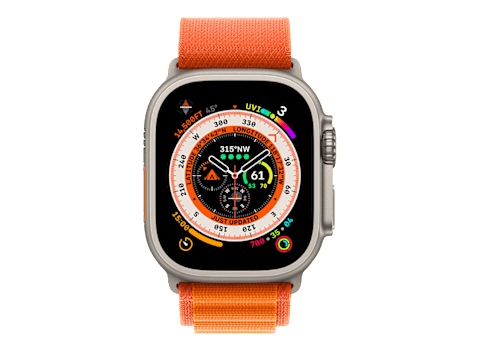
Apple Watch Series 8
What it is: The latest iteration of the classic Apple Watch, with modest updates.
What’s to like: If you’re a fan of Apple’s earlier Watches, you should like the new Series 8 as well. It looks and feels a lot like the Series 7 model. The case and display are the same—with just a slight change in the color selection—and the interface and main features look familiar, too.
The Series 8 does feature new body temperature sensors for retrospective estimates of ovulation, which can be useful in family planning and other healthcare decisions, as well as a high g-force sensor for car crash detection. It also has an ECG function designed to detect unusual heart rhythms and a blood oxygen sensor for added sleep-tracking accuracy, which differentiates the Series 8 from the value-priced SE. There’s no change in battery size, though the latest version of the Watch operating system adds a new function that can double battery life, Apple says, although it does disable many functions. The Series 8 performs well in our tests, including the new health features score.
What’s not to like: If you’re looking for significant change, the minor upgrades of the Series 8 might disappoint. In our ratings, the Series 8 falls just a bit short of the Ultra, performing less well in the scratch test. And while it’s not a drawback per se, every Apple Watch all but requires you to use an iPhone for the best user experience.
Bottom line: The Series 8 looks and works much like its Apple Watch predecessors with a few new features that might be important to some users.
Apple Watch Series 8 GPS + Cellular (41mm)

Google Pixel Watch
What it is: The eagerly anticipated Pixel is the first Android smartwatch from Google.
What’s to like: This sleek, round watch certainly is elegant, but what truly sets it apart is the way it interfaces with the Google ecosystem. While it will work with other Android phones, it’s designed to work with a Pixel phone and the company’s Pixel Buds earbuds.
It also works neatly with those Google-owned services that dominate the internet, from Gmail to the robust fitness functionality of Fitbit’s software offerings. The Pixel Watch sits near the top of our ratings with strong grades for ease of use, readability in bright and low light, and heart rate accuracy. The Pixel’s gets a strong score for health features, but it does rank behind some models from Apple and Samsung.
What’s not to like: As with the Apple Watch, battery life is a bit of an issue with the Pixel Watch. Google claims it lasts 24 hours, so if you’re going to wear the watch for sleep tracking, you’ll need to factor in a few minutes for charging.
Bottom line: You can think of the Pixel Watch as the Apple Watch of the Android world, designed to integrate smoothly with Google’s devices as well as its online services.
Google Pixel Watch LTE
Samsung Galaxy Watch5
What it is: This latest version of Samsung’s smartwatch is an incremental update of the Galaxy Watch4 aimed squarely at people who use Samsung’s smartphones.
What’s to like: The Galaxy Watch5 has a bright, round 1.4-inch AMOLED display with a sapphire crystal the company claims is more rugged. It also features a mic and speaker for handling phone calls.
From a features point of view, the Galaxy Watch5 offers a robust suite of health and fitness options, including a blood oxygen sensor, ECG monitoring (that could detect irregularities in heart rhythm), and even a sensor claimed to measure body fat. The Watch 5 gets high marks from our testers, including a top score for health features.
What’s not to like: If you have an Android smartphone that’s not made by Samsung, you won’t be able to tap the watch’s full capability, including an array of fitness features under the Samsung Health umbrella. The Galaxy Watch5’s claimed battery life of two days is also relatively short.
Bottom line: The Galaxy Watch5 is an attractive option if you have the right phone.
Samsung Galaxy Watch5 (44mm)
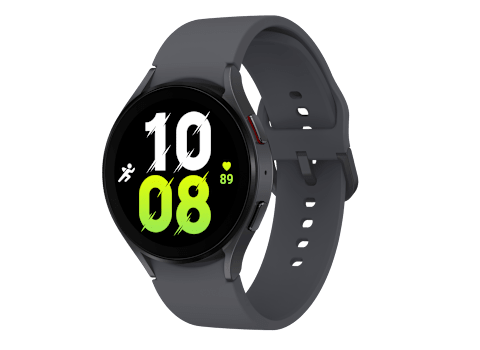
Garmin Venu 2 Plus
What it is: A smartwatch from a company known for its performance-oriented fitness trackers.
What’s to like: The Venu 2 Plus is more stylish for everyday wear than Garmin’s previous offerings, which looked and felt like fitness trackers, and is compatible with both Android phones and iPhones. The Plus’s biggest upgrade over the previous Gen Venu 2 is a new mic, which allows you to make phone calls; summon voice assistants like Alexa, Google Assistant, Siri, and Samsung’s Bixby; and even play music.
The Venu 2 Plus is also packed with a variety of activity profiles, ranging from basic workouts like running to more esoteric ones like indoor rowing and bouldering. It even includes workout animations that show you how to do exercises and which muscles are targeted. The Venu 2 Plus also features a long claimed battery life of up to nine days but it does lack wireless charging.
What’s not to like: The Venu 2 Plus performs well in our tests. It doesn’t quite reach the top of our ratings in step-count performance, heart rate performance, or scratch test, but it earns a top score in our new health features rating. Its price makes it a bit more expensive than models from Apple, Samsung and Google.
Bottom line: If you’re more interested in beating your personal best than emptying your inbox, the fitness-oriented Garmin Venu 2 Plus could be a smart choice.
Garmin Venu 2 Plus (43mm)
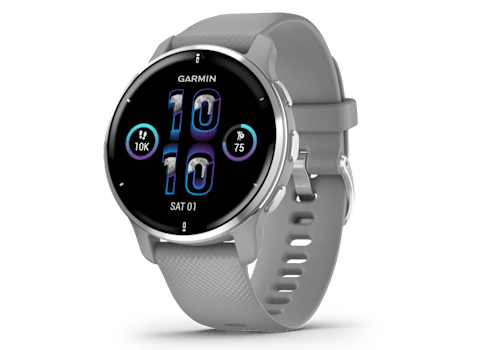
Fitbit Sense 2
What it is: A fitness-oriented smartwatch likely to please Fitbit fans.
What’s to like: If you have a Fitbit fitness tracker, you’ll probably feel at home with the Sense 2, especially if you see the benefit of the watch’s large display. The model works with both Android phones and iPhones, although it’s probably a better option for the Android user.
The Sense 2 has built-in GPS, which allows you to go for a run or a ride without hauling your smartphone along, plus a blood oxygen sensor, which enhances its sleep-tracking capabilities, as well as sensors for stress monitoring. Our testers find that it’s a solid performer when it comes to ease of use and step counting and its health features score is above average. The Sense 2’s claimed six-day battery life is better than that of most smartwatches.
What’s not to like: The Sense 2 still looks a bit like a fitness tracker, so it might not be your first choice for an important meeting or a first date. It also has a lot of the same limitations as a fitness tracker, with a limited array of available apps. Our testers report that the Sense 2’s heart rate accuracy is only average. With a $300 price, it’s competing with higher-rated models like the Apple Watch SE, the Google Pixel and Samsung’s Galaxy watches.
Bottom line: It’s probably best to think of the Sense 2 as a fitness tracker with bonus features, especially considering its price.
Fitbit Sense 2
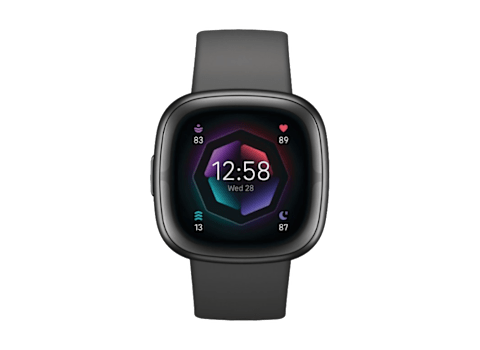
Amazfit GTR 2
What it is: An attractive, budget-priced smartwatch that won’t break the bank.
What’s to like: Compatible with both Android and iPhone models, the GTR2 has two big things going for it—the price is very low, and the battery life is really good, at a claimed 14 days. The case design is sleek, channeling some higher-end analog watches, and the touchscreen display is bright and easy to read. The model also features stand-alone GPS, which is useful when you’re out running without your smartphone. Our testers give the watch solid marks across the board, except for its heart rate monitoring, where the Amazfit’s performance is just average.
What’s not to like: As you might expect for the price, the fitness features of the GTR 2 are pretty basic. The model also lacks connectivity with third-party apps like Spotify.
Bottom line: The Amazfit GRT 2 is legitimately cheap but doesn’t look it and, despite the price, is a solid performer.
Amazfit GTR 2
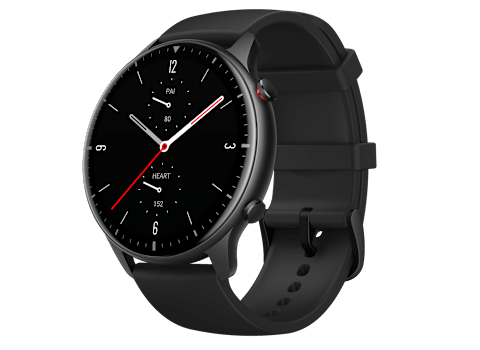
Fossil Gen 6
What it is: A slick-looking watch that can play nice with both Android phones and iPhones.
What’s to like: The Gen 6 can run the recently released Wear OS3 operating system, which should be a significant upgrade over Wear OS2 with enhanced health tracking features in Fossil’s app. The Gen 6 also has a stand-alone GPS, which helps runners and cyclists track their workouts, and a blood oxygen sensor that enhances sleep tracking. The Gen 6’s price, coupled with its good performance, also makes it an attractive value.
What’s not to like: The Fossil Gen 6’s claimed battery life is only a day, which is quite short. And while it has a blood oxygen sensor, it lacks ECG functionality that can measure heart rhythm irregularities. The Gen 6’s lab results were fine, but less than stellar with a heart rate monitoring grade and a health features score that were merely average.
Bottom line: The Gen 6 is an attractive model that some users might find to be a bargain.
Fossil Gen 6 (44mm)
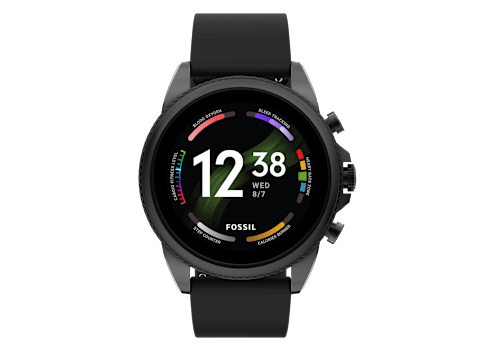
Citizen CZ Smart
What it is: A retro-looking smartwatch from a company best known for traditional analog watches.
What to like: The traditional styling will appeal to users who want smartwatch functionality and the look of chunky stainless steel. The watch also performs very well in our labs, with solid scores in ease of interaction as well as heart rate and step-count accuracy.
Compatible with both Android phones and iPhones, the Citizen offers GPS, although it lacks a blood oxygen sensor, which limits its sleep-tracking functionality. Our testers find the CZ Smart very easy to use, though its health features score is just average.
What’s not to like: With a retail price of around $400, the CZ Smart is significantly more expensive than the functionally similar Fossil Gen 5; unless you find a steep discount, you’re paying a significant premium for that attractive stainless steel case. The CZ Smart’s Wear OS2 operating system has been replaced, and it’s not slated for the Wear OS3 update. The one-day reported battery life is also relatively short.
Bottom line: It’s a solid performer with elegant looks that will appeal to some consumers.
Citizen CZ Smart
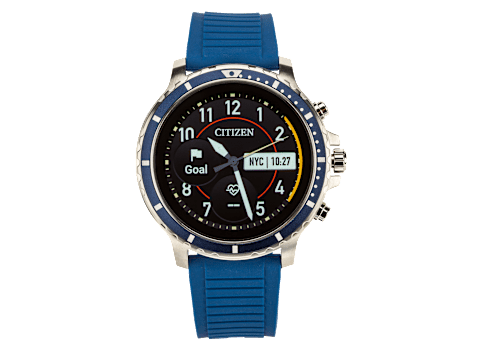
Consumer Reports is an independent, nonprofit organization that works side by side with consumers to create a fairer, safer, and healthier world. CR does not endorse products or services, and does not accept advertising. Copyright © 2023, Consumer Reports, Inc.

